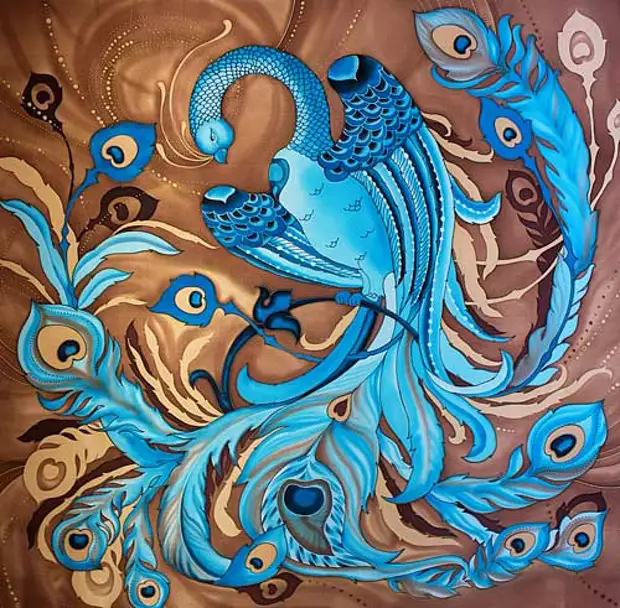
Master Class on Mural Batik Shawl "Bird of Happiness" from Catherine Schepina
I present to your attention a detailed master class on painting a batik handkerchief "Bird of Happiness" in the technique of a cold batik. The composition is suitable for creating a handker, and for panel painting.
To work, we will need:
- Brush Round Protein No. 10, Synthetic No. 5;
- glass tube for reserve;
- reserve colorless, black, blue firm "Gamma";
- Aniline paints for a batik under bearing - beige, brown, turquisite and black;
Important! For painting instead of paints for steaming, you can use liquid acrylic silk paints, such as Marabu. These paints are easily fixed on the fabric using an iron.
- jar with water, a plate for mixing paints;
- Silk natural satin for batik;
To begin with, it is possible to use artificial silk - cashibo, but it is not suitable for the handker, only for the panel, since too rough.
- Wooden 90 * 90 cm subframe;
- Buttons for fastening silk on a subframe.
I use the furniture stapler, as the subframe is quite fat. If the tree on the subframe is thin, then it is better to use the buttons.
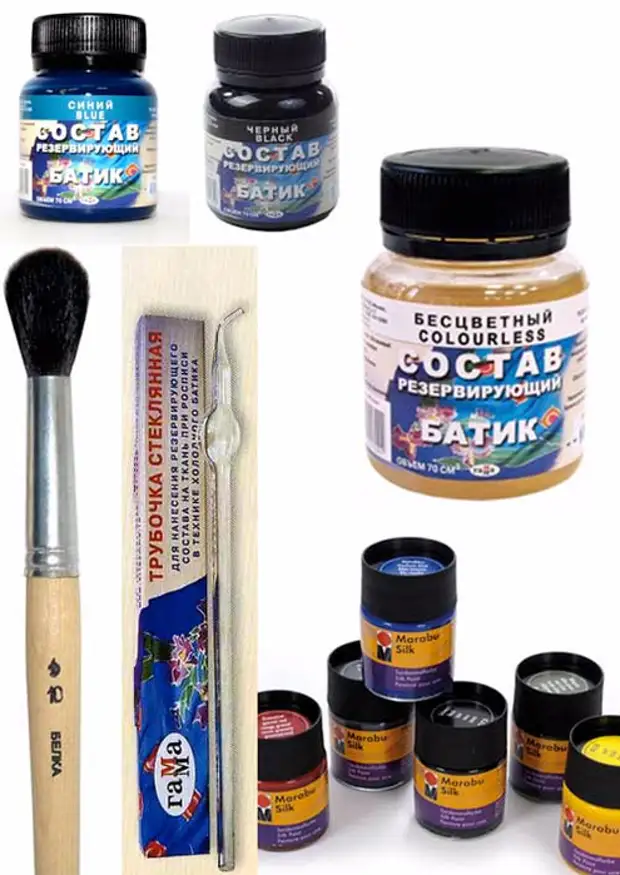
Start painting:
Stage 1 - stretch silk to the subframe so that the fabric is like a drum and has not seen. What is the way you pull the fabric to the subframe, will depend on the success of the work.
2 Stage - You can stand on silk out the outlines of the future birds, only barely noticeable contours, you can prepare a drawing on paper, and then transfer to the carbon onto silk. In this work, I immediately applied the outline of the birds on silk with a pencil.
3 Stage - Obligate the black reserve Bird's main outlines.
Important! Pay attention to the viscosity of the reserve before starting: too thick reserve will be badly running out of the tube and does not heat the fabric enough to then not skip the paint through the reservitory line. Too thick reserve can be diluted with gasoline. Also, work can be spoiled and liquid reserve when it runs out of the tube faster than you lead the line. From this line it turns out fatty with subtepters. It is harder to solve this problem, as an option, leave a jar with a reserve open for a day on the balcony, or if there is a thick reserve - mix them before getting the desired consistency.
Important! So that the line is fine and beautiful, the tube with the reserve is kept strictly perpendicular to the tissue, slightly pressed on the tube and drive it smoothly, evenly so that the reserve time to heat the fabric and at the same time did not appear excessively out of the tube. It would seem that it is elementary, but as experience shows, newcomers often tip the tube and reserve is poured inactiously, intermittently, which leads to defects when painting.
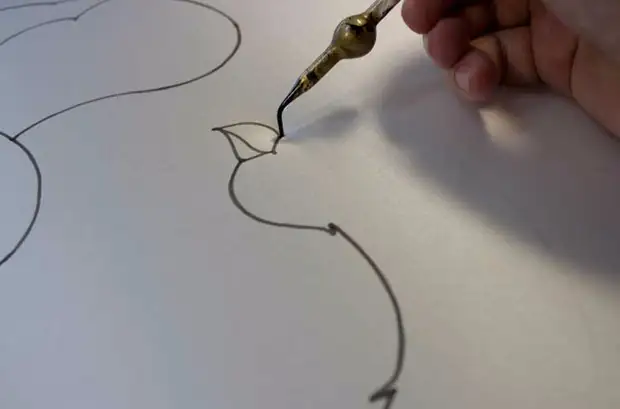
Important! Try when working to ensure that the areas limited by the reserve are closed, continuous. In the presence of the slightest hole during the painting through it, paint will run to the next area.
So, we spent all the main contour lines of our bird with a black reserve.
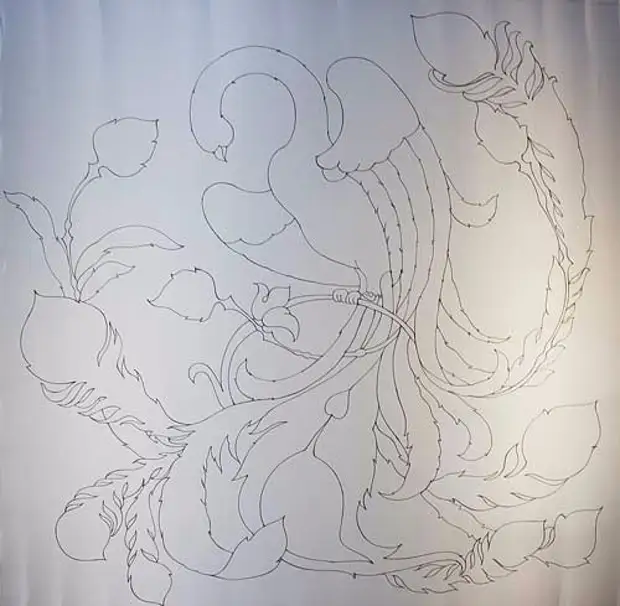
4 Stage - Filling the background of beige paint.
We carry out the paint solution in a plate. Filling the background sections of the scarf is better to perform a large soft squirrel with a brush, as the squirrel gives the paint well and does not leave the divorce on silk.
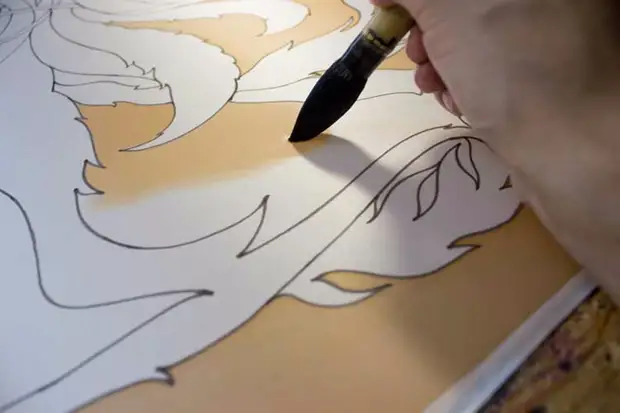
The background seemed too light to me, so I applied several patterns on the background (the photo was marked in red) now a colorless reserve and again covered the background with darker brown paint for raw. The technique of raw material is that the site is pre-wetted with a brush, and then immediately paint is applied to this area.
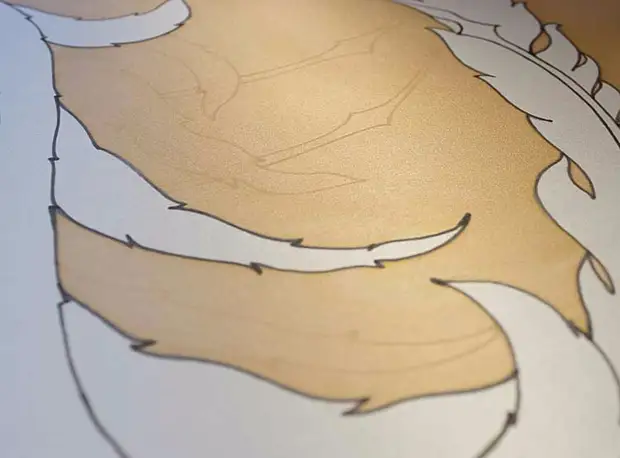
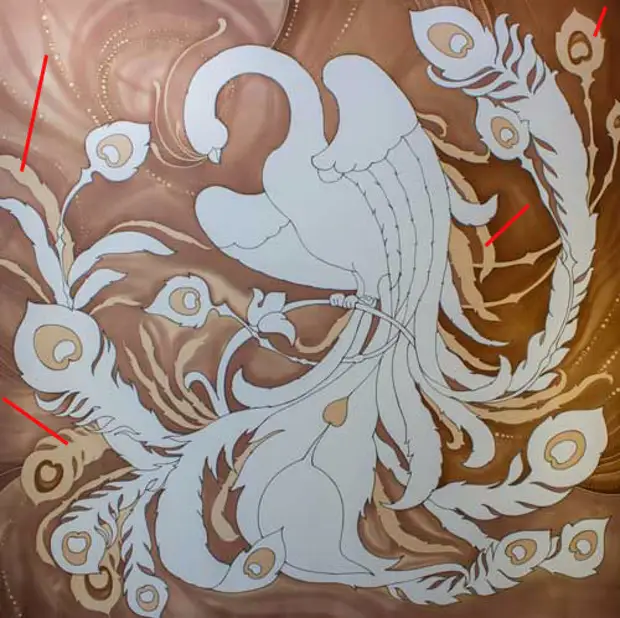
The 5th stage - proceed to painting the birds.
Since we draw a bird of happiness, we will make it turquoise. Yes, and to the brown background, the boot of blue color will be harmony. Painted I led as follows - some kind of feathers just poured blue, and some feathers poured blue and immediately applied to the raw brush with a brush with a darker turquoise and brown, so that the bird could not contrast with the background.
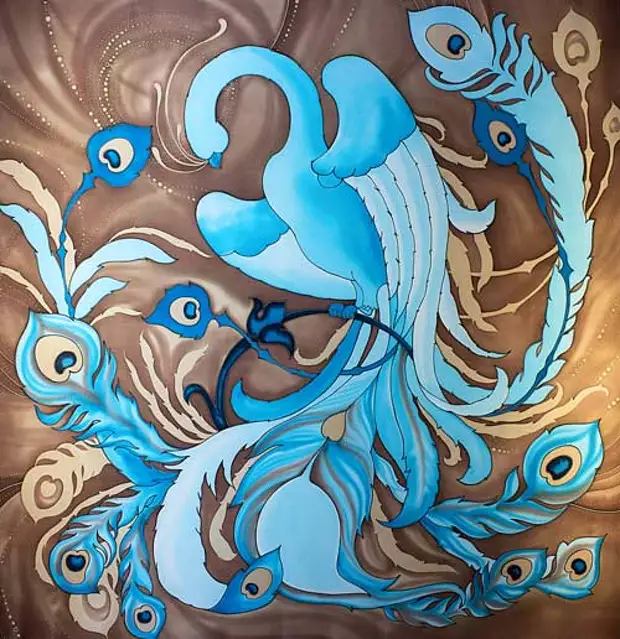
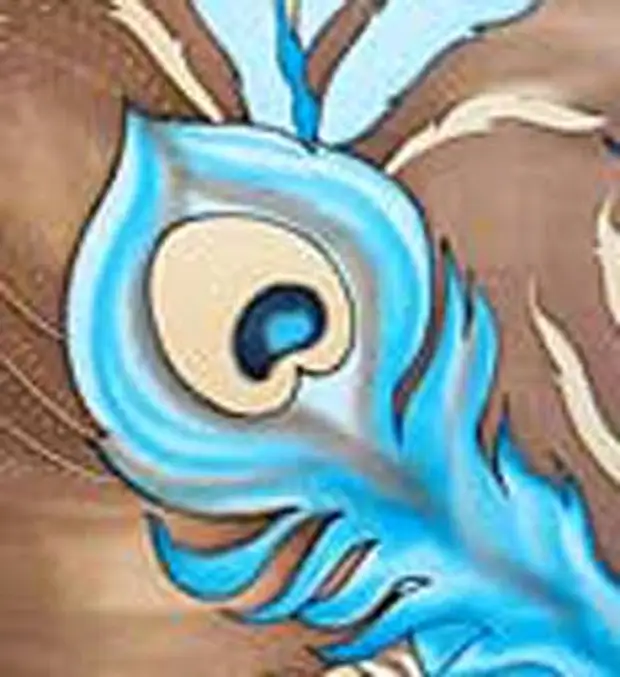
Stage 6 - decorate the bird.
Now it's about the decoration of the plumage. Colorless reserve we applose the contours of the thones and describe them with color.
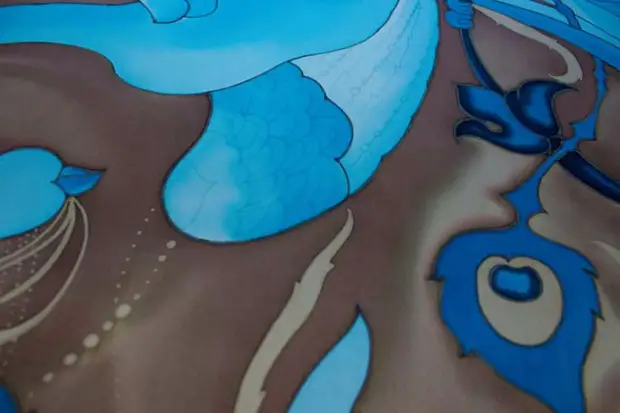
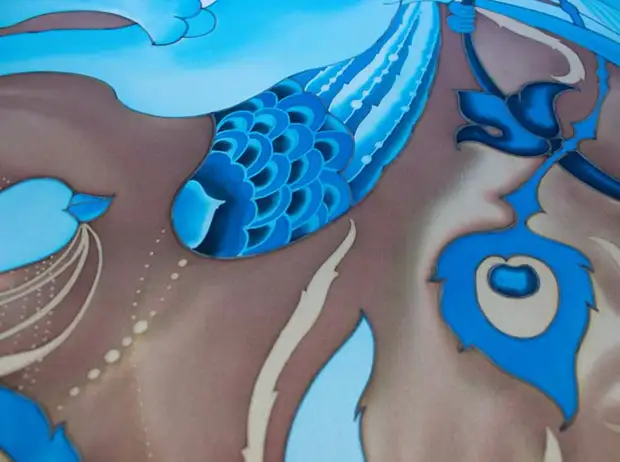
Blue reserve decorate a shallow plumage on the neck and bird wings.
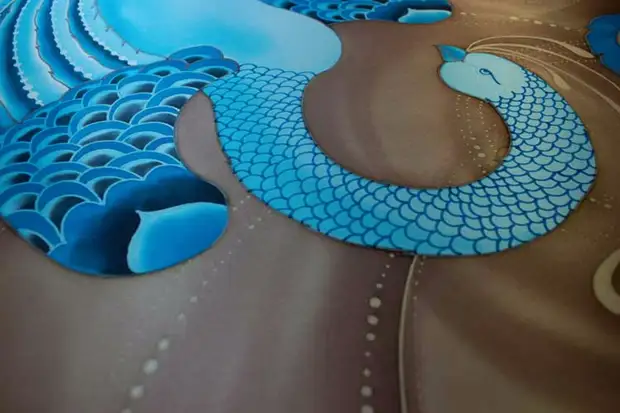
7 Stage - Additionally decorate the background.
For contrast, I decided to add in the background of more brown feathers. For this, a colorless reserve draw the contours of the feathers and pour their paint.
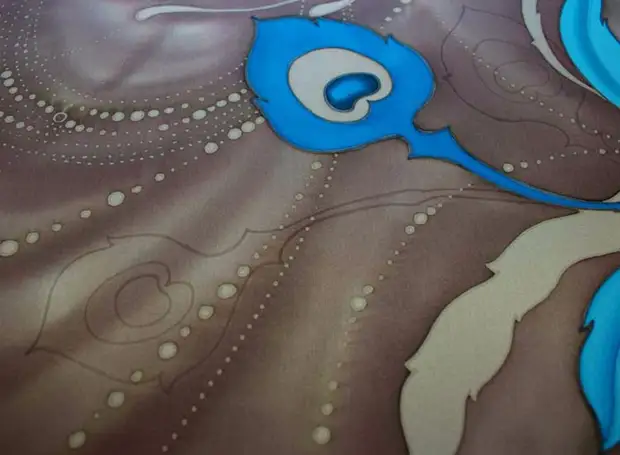
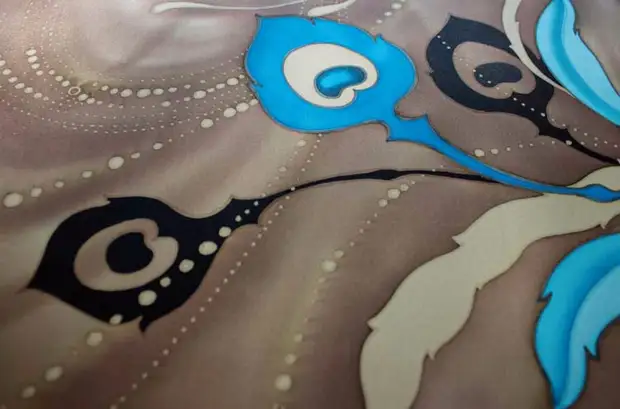
Here our beauty on the handkerchief came to life, you can remove work from the subframe, fasten the dye to the ferry and process the edges of the header.
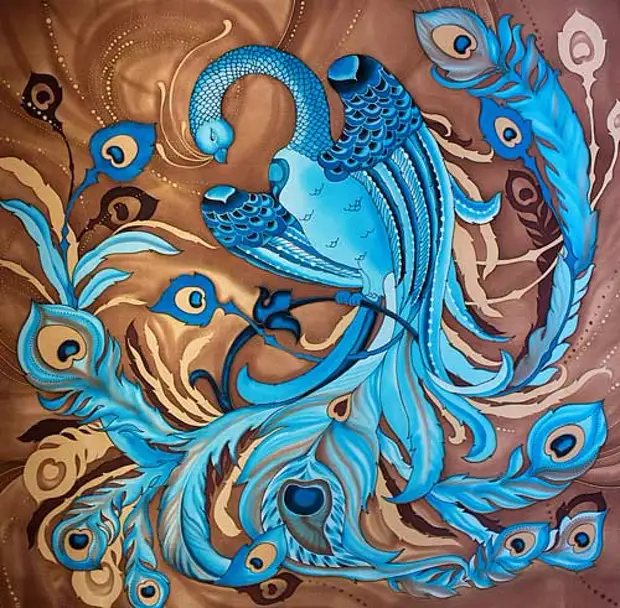
I hope my tips will be useful to you, success in creativity!
